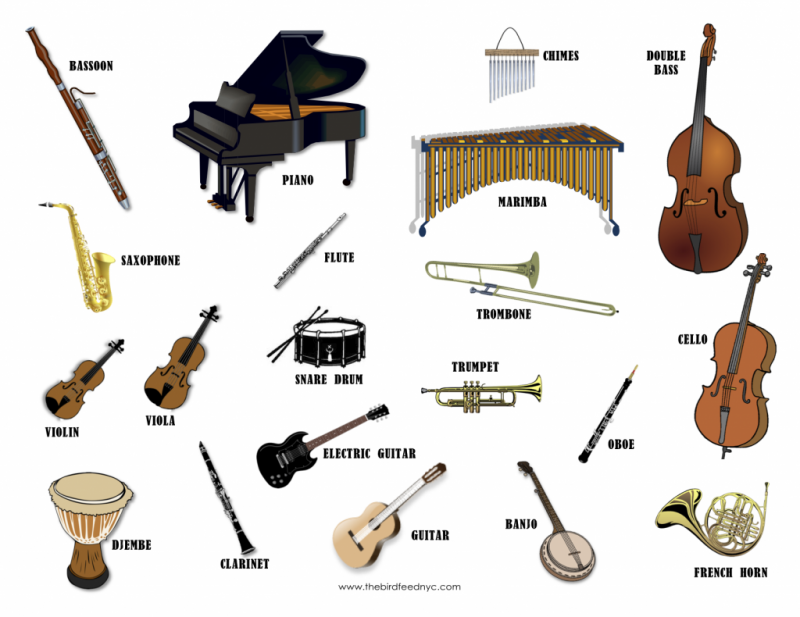Africa’s musical heritage is as diverse as its landscapes, reflecting a rich tapestry of cultures, traditions, and histories. Central to this heritage are the musical instruments that have been used for centuries to express emotions, tell stories, and celebrate communal life. This blog post delves into some of the most iconic and intriguing musical instruments from across the African continent, highlighting their unique characteristics and cultural significance.
1. The Djembe: Drum of the West African Forests
The djembe is perhaps one of the most recognizable African drums, celebrated for its powerful sound and versatility. Originating from the Manding people of West Africa, particularly in Mali, Guinea, and Ivory Coast, the djembe is a goblet-shaped drum made from a single piece of wood with a drumhead typically made from goat skin.
Traditionally, the djembe is played with bare hands, producing a wide range of tones, from deep bass to sharp high notes. It is often used in communal ceremonies, dances, and celebrations, serving as a central instrument in West African drumming ensembles.
2. The Balafon: Wooden Percussion with Resonance
The balafon is a wooden percussion instrument resembling a xylophone, and it is prominent in the music of West Africa. It consists of wooden bars of varying lengths, mounted over gourd resonators. The bars are struck with mallets to produce melodious tones.
Traditionally associated with the Mande people of Mali, the balafon plays a crucial role in rituals and storytelling. Its sound is not only melodic but also deeply resonant, creating a rich auditory experience that is integral to West African music.
3. The Kora: The African Harp-Lute
The kora is a stringed instrument with a unique design, often referred to as an African harp-lute. Originating from the Manding people of West Africa, it features a large calabash (gourd) resonator covered with a cowhide and a long wooden neck with 21 strings.
The kora is played by plucking the strings with the fingers, producing a sound that is both harp-like and lute-like. It is traditionally used by griots, who are oral historians and musicians in West African societies, to accompany storytelling and historical recitations.
4. The Mbira: The Thumb Piano of the Shona People
The mbira, also known as the thumb piano, is a traditional instrument of the Shona people from Zimbabwe. It consists of a wooden board with metal keys (tines) of varying lengths, which are plucked with the thumbs to produce a melodic and rhythmic sound.
The mbira is used in various cultural ceremonies, including spiritual and social gatherings. Its soothing, bell-like tones are often employed to invoke ancestral spirits and create a meditative atmosphere.
5. The Udu: Clay Percussion from Nigeria
The udu is a unique clay percussion instrument originating from the Igbo people of Nigeria. It is an earthenware pot with a distinctive shape, featuring a hole on the side and another smaller hole on the top. The udu is played by striking the surface and holes, producing a range of deep, resonant sounds.
Traditionally used in ceremonies and dances, the udu’s sound is considered both percussive and melodic. Its deep, earthy tones are integral to various forms of African music, adding a distinct texture to the musical ensemble.
6. The Ngoni: The Traditional Lute of the Sahel
The ngoni is a traditional lute found in the Sahel region of West Africa, particularly among the Bamana and Fulani people. It has a gourd or wooden resonator, a long neck, and a varying number of strings (usually between four and six).
The ngoni’s sound is often described as warm and resonant, and it is used in both solo performances and as an accompaniment to vocal music. It plays a significant role in traditional storytelling and cultural expression.
7. The Talking Drum: Communication Through Rhythm
The talking drum is a unique drum found in various West African cultures, including the Yoruba people of Nigeria. It is shaped like an hourglass and has drumheads that can be tightened or loosened to vary pitch. The drum is played with a curved stick and can mimic the tonal patterns of spoken language.
Historically, the talking drum was used to send messages across distances, mimicking the rhythms and tones of language to convey complex messages. Today, it remains an important instrument in ceremonies, dances, and storytelling.
8. The Sabar: Rhythm and Dance in Senegal
The sabar is a drum from Senegal, used primarily in traditional dance music. It consists of a cylindrical wooden shell covered with animal skin and is played with one hand and one stick. The sabar is known for its sharp, energetic beats that drive the rhythms of dance and celebration.
In Senegalese culture, the sabar is integral to social and ceremonial events, including weddings and festivals. Its rhythms are deeply connected to dance, making it a central element in the celebration of community and culture.
Conclusion
The diversity of African musical instruments reflects the continent’s rich cultural heritage and deep connection to music. Each instrument, from the resonant djembe and balafon to the melodic mbira and talking drum, plays a unique role in the musical traditions of its people. Exploring these instruments offers a glimpse into the vibrant and varied musical landscape of Africa, highlighting the profound ways in which music can unite communities and celebrate heritage.


0 Comments